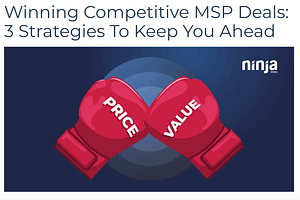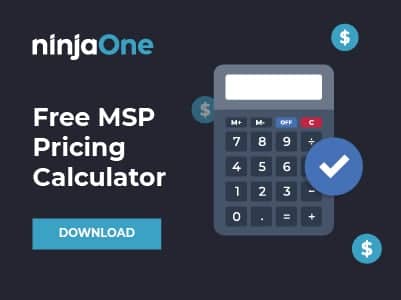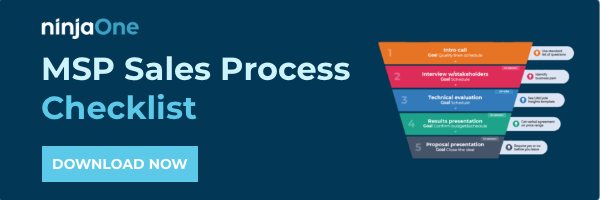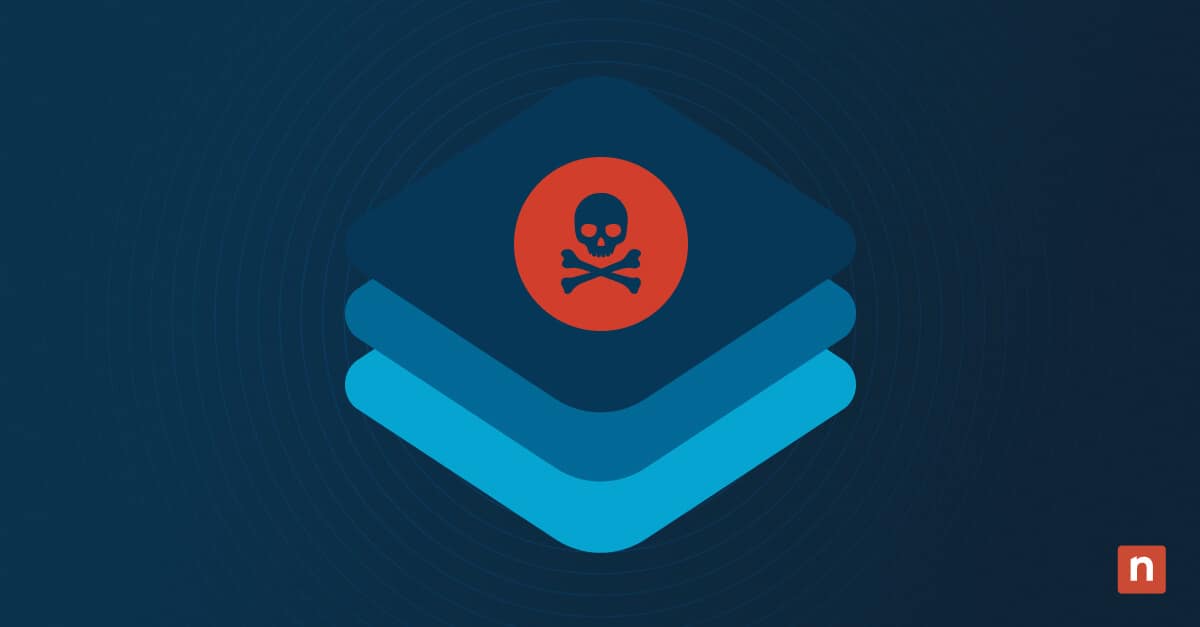Key Points
- Define Your Ideal MSP Client: Identify high-value industries, client sizes, and operational maturity levels using CRM data and client scorecards. Target verticals you already serve well to focus your managed services sales strategy.
- Lead with Value, Not Technology: Sell outcomes, not hardware or software. Frame every IT solution in terms of business impact—reduced downtime, increased productivity, or stronger cybersecurity posture.
- Simplify the Message for Non-Technical Buyers: Avoid jargon and focus on clear, benefits-driven communication. SMBs want solutions, not technical lectures. Use analogies and real-world results to make your MSP offering easy to understand.
- Use Value-Based and Transparent Pricing Models: Price according to perceived value, not cost markups. Combine tiered MSP pricing and as-a-service models (SaaS, IaaS, PaaS) to match client needs and budgets. Communicate pricing transparency to build trust and differentiation.
- Build Long-Term Partnerships, Not Transactions: Position your MSP as a strategic business ally focused on continuous improvement, automation, and cybersecurity resilience. Consistent communication, reporting, and proactive service deepen client loyalty and recurring revenue.
Many entrepreneurs hang their shingle without putting much thought into sales. They find out further down the road that sales is the heart of enterprise, and that it demands just as much preparation and planning as any other aspect of business. More often than not, a managed service provider (MSP) who doesn’t plan ahead finds a great deal of difficulty growing once their referral business has inevitably run dry.
If things are allowed to get desperate, the MSP will sometimes act rashly to try to make up for the lost growth. They’ll make cold calls without a plan, or blindly try a few marketing tricks in hopes that everything will turn around.
But growth is not that easy–as you may already know. In this article, we’ll discuss the sales aspect of MSP growth planning and share some proven tips for tackling the challenge of earning new clients.
What this article will cover:
- An overview of selling managed IT services
- Challenges when selling managed services
- 8 key tips for selling MSP services
- Questions to ask when setting IT services
- Pricing managed IT services for the most sales
An overview of selling managed IT services
We all know that most businesses today rely heavily on IT, which is used to connect with customers, run transactions, store data, and collaborate among coworkers.
All that technology requires maintenance and support and many SMBs lack the resources to handle it themselves. Managed services come to the rescue by outsourcing specific tasks within the information technology industry including:
- Cybersecurity
- Asset management
- Cloud infrastructure management
- Email and telecommunications
- Disaster backup and recovery
- Help desk
MSPs give end users a cost-effective way to optimize IT support and leverage tech in ways that would be impossible using only in-house resources. They also give SMBs a dedicated team of IT professionals that maintain existing infrastructures and anticipates potential issues so that they can be addressed before they become problems.
These are all valuable results for the average small business owner or enterprise. That said, many MSPs believe that IT services are such a necessity that it shouldn’t require much selling prowess to get new MSP clients. This is a huge misconception. Even though consumers are looking for help with IT, they still need to be approached with a sales mindset.
Improve your pricing strategy to meet trends and increased MSP value.
Challenges when selling managed services
The art of selling managed services is fraught with challenges. Some of the most common roadblocks that MSPs face include the following:
The consumer’s lack of knowledge
Most SMBs aren’t readily aware of the risks of poorly maintained IT–or the benefits that can be garnered from technology in general. They may not even be aware of their cyber risk or how they can get more hours of productivity by streamlining procedures and integrating platforms.
Customers believe the solutions are too expensive
Every business will try to maximize profits and reduce costs. Unfortunately, IT costs can be difficult to justify in the end user’s eyes because IT is often thought of as a matter of “just keeping the lights on”. If the consumer has never experienced a major IT problem, they likely don’t see a reason to start spending money on it.
Even worse, many consumers believe that IT is an easy DIY project. They don’t mind managing their own technology if it means saving thousands of dollars, even if it wreaks havoc on their level of operational maturity.
Too many MSPs meet this challenge by lowering their prices until the end user is interested, but there are better ways to overcome these misconceptions than by squashing your margins. It’s all in how you present your offering during the sales process, which we’ll explore in detail shortly.
There’s a lot of competition
The above challenge leads to something that most MSPs are facing these days: price wars. When there are too many competing MSPs trying to win clients with low prices, the situation starts to become untenable. Worse yet, some larger, expanding service providers will intentionally offer unsustainable pricing when they move into a new area just to put potential competitors out of business.
This is yet another reason why lowering prices is not considered a legitimate sales technique in many circles. (Ask some sales managers and they’ll tell you that excessive discounts are proof that the salesperson didn’t do their job.)
Related reading:
8 key tips for selling managed services
How do you surmount MSP sales challenges and avoid the issues mentioned above? It all begins by having a clearly defined, thoughtful sales process. The following tips will help you construct a sales system that builds value, attracts the right consumers, and closes deals.
1) Define your audience
Many MSPs find this first step counterintuitive, especially if they’re struggling for new business. In their minds, the answer must be to go after as many new clients as possible to improve their odds of success. In truth, that approach doesn’t work in the world of sales and marketing.
You can’t be everything to everyone, right?
You should begin by identifying the clients you’d want to do business with. You already know which types of clients you serve well, which are profitable, and which have been most responsive to your offering.
Hopefully you already have a database of clients (your CRM) to help you explore these questions. You can run reports to learn which client types
- had the easiest onboardings,
- required the least oversight, and
- generated the most profit.
In addition to those numbers, it’s a good idea to include more qualitative insight; you and your technicians likely already have a very good feeling for who your best and worst customers are. If you’re not already conducting regular client audits, those can be extremely helpful exercises. This basic client scorecard can help.
You’ll also want to consider any advantages you may have in the market. Are you familiar with a certain type of business? Do you have a lot of clients in a certain industry vertical? If so, lean into your strengths here. Narrowing your audience will be key to putting together the most effective sales plan.
Lastly, audiences aren’t just defined by their industry. You can also narrow them down by geographical location, how soon they’ll need IT services, or their level of operational maturity, among other factors.
2) Focus on conveying value
Don’t make the rookie mistake of selling the technology. End users rarely care about the nuts and bolts of IT; that’s the reason they’re hiring you. Consumers care about value. To be more specific, they care about feeling that every dollar they spend results in some tangible benefit for themselves and their business.
This is why all of your marketing copy and your sales pitches should adopt the buyer’s perspective. What’s important to them? How do those tech specs and statistics relate to something that matters to the consumer?
This is one reason why selecting a narrow audience is helpful. Taking the point of view of a specific audience is much easier than trying to assume the perspective of “everyone, everywhere who might buy IT services someday”.
3) Make it simple
Once you start pitching from the customer’s perspective, this part should come naturally. That said, we should cover it anyway because IT professionals have been known to get carried away with the technical details.
Try to avoid talking about anything technical that the consumer doesn’t understand—and be generous in your estimation of their technical IT knowledge. If you go down that road, you have to take long breaks from selling just so you can provide an IT education that they probably don’t want or need.
In addition, stick to the benefits and how they translate to value that matters to the consumer. Think about how cars are sold. Does a salesperson sit a customer down and explain the workings of an internal combustion engine, or do they talk about the look and feel of the car?
4) Price appropriately
Most MSPs (and business owners in general) get nervous when it comes to pricing. The old maxim was to take your costs and double them to determine a price, but in the highly-competitive market we’re currently in, that doesn’t work quite as well as it used to.
How do you keep from overpricing or underpricing? The answer is that pricing should follow value. The more value you can convey to the consumer, the higher you can set your prices without scaring them off.
On the other hand, if you present yourself like every other MSP in your marketing, throw down a couple of vendor-made sales slicks at your meeting, and talk about generic services, the consumer will expect pricing that aligns with that. They’ll see you as a replaceable commodity and will want the lowest price you can give them.
On the other hand, if you present yourself as a uniquely valuable IT partner and demonstrate tangible benefits of working together, you can set your prices higher. In short, if you want to earn more than other MSPs, you have to look better than other MSPs.
5) You might need to try cold calling
If your referral business has dried up and you’re out of ideas, you might have to make cold calls. Some people shy away from this idea (for various reasons) but the truth is that it’s part of selling. If you need new leads, it can sometimes be the fastest and most reliable way to get them.
As with anything, you don’t want to jump into this half-cocked. Here’s some advice for making the most out of your cold calls.
Cold Calling Tips
- Know your target before you make the call. Start by identifying the type of company you want to serve—and only reach out to prospective customers who fit the profile. What company size makes sense? What vertical industries? What geographical locations? Who is the decision maker you’re trying to reach? Who is their gatekeeper?
- Adopt modern outbound methods. These include targeted LinkedIn outreach, social selling via other platforms (e.g., Facebook, Instagram), and even AI-assisted prospecting. Use more technological resources to your advantage.
- Go from “cold” calling to “warm” calling. A sales letter or email introduction to the contact prior to making your first cold call can help ease them into the first conversation.
- Don’t try to trap anyone into speaking with you. Be honest in your cold call and ask for permission to talk to the customer.
- As with all sales situations, ask open-ended questions. Try to get the information you need while also freeing up the prospective customer to tell you more about their managed service needs.
- If the prospect gives you a hard “no” on a meeting, try to get something else. Ask if they wouldn’t mind sharing the term date of their current IT contract so you can call them back then. You can also ask if they’d like to be added to your email newsletter.
6) Reduce friction
You have to strike a balance between showing details of your service and keeping things simple enough for the consumer to engage with. Avoid the common mistake of listing out every possible detail of your offering. Yes, conveying value is good, but it doesn’t count if the list is too long or convoluted for the audience to read it.
Stick to value from the perspective of your consumer. This should make things simple and brief–and you’re always free to expand into details if you’re asked.
7) Set clear expectations
Set expectations around every interaction. Don’t just ask for a “discovery call”. Ask for a “30-minute call where we’ll discuss X and you can ask me questions about Y”. Consumers like to know exactly what they’re getting into.
More importantly, don’t exaggerate what you’re offering or make false promises just to get the meeting or the sale.
8) Break through hesitation with social proof
Showing off previous clients who’ve had positive outcomes from your services is a great way to show your experience and capabilities. Always have testimonials and case studies on hand. If you don’t have any yet, getting them should be a top priority on your sales to-do list.
Also, if you can arrange it, you can set up a conversation between a new prospect and an old client to discuss the results from your services. This can be a hugely effective MSP sales strategy.
Re-evaluate pricing to match your MSP’s growth and brand equity.
Questions to ask when selling IT services
Selling is a process of building a relationship with a consumer. It’s conversational, not a lecture or a speech. As with any conversation, asking the right questions can set the stage for your desired outcome: a sale.
Here are some questions that can lead you down the road to sales success:
- What are your main concerns as a growing business?
- What are your current cybersecurity concerns?
- How has downtime or failing technology impacted your bottom line?
- What are some IT concerns that are keeping you up at night?
- How much did you spend on network or IT equipment repair over the last year?
- How are you protecting your remote workers?
- How much do you spend on IT support each quarter?
- When do you think you’ll need to buy new computing/networking hardware?
- Have you encountered any issues with regulation compliance?
- What areas in your business do you think can be further improved with automation?
These open-ended questions can help you unlock some powerful insights and start the conversation off with your prospect.
Pricing managed IT services
As we mentioned earlier, pricing is a combination of research and effective sales.
Start with the research needed to set prices and price structures in terms of MSP profitability and market demands. It’ll help to know what your competitors are charging as well as the average budgets of your target audience(s).
Now work on your value statements. The more you can show that a partnership will deliver tangible, unique value to your consumer, the higher you can set your price. (Yes, you can even price higher than your competitors if you can truly show that your MSP is the better choice.) Remember that this isn’t entirely about educating the consumer, it’s about reaching them on a level that means something to them.
Once all is said and done, adopt price transparency as a practice, which can help build further trust with your prospective customers. Also, consider “as a service” models (e.g., IaaS, PaaS, SaaS) as well as comparators for more detailed information about how your services compare with those of your competitors.
More free resources
Remember that you want to be your client’s business partner, not just a vendor. This relationship is built throughout the sales process—but only if that process is well thought out and purposeful. For this planning and preparation are key!
In the end, using the guidelines and tips above, you can develop an effective sales strategy that will allow you to grow your MSP without compromise. With the right plan in hand, you can sell confidently, earn new MSP clients, and expand your sales team into a powerhouse of new MSP business growth.










